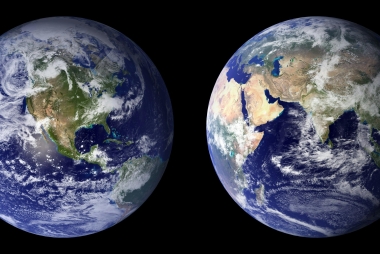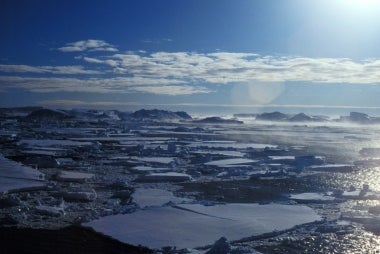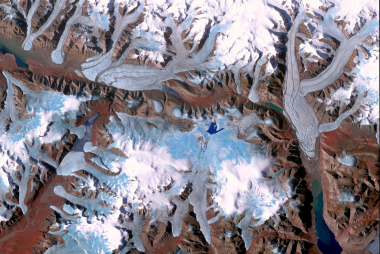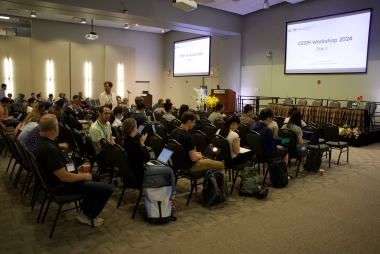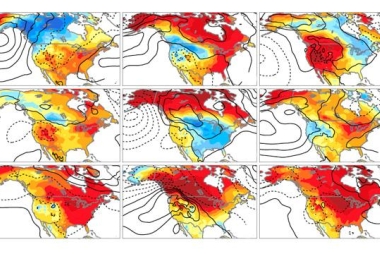2023 CESM Distinguished Award
We are pleased to announce that Julio Bacmeister and Peter Lauritzen have jointly received the 2023 CESM Distinguished Award. This recognition is in acknowledgment of their exceptional contributions towards advancing our understanding of dynamical processes within CESM atmosphere models. Congratulations to Julio and Peter for this well-deserved achievement!

Peter Lauritzen’s dynamical core research and community contributions are extensive and wide ranging. He has led the implementation of multiple dynamical cores into CESM, revolutionizing the process for testing and selecting a primary dynamical core in future versions of CAM and more broadly for the NCAR Software for the Integrated Modeling of the Atmosphere (SIMA) activity. Peter has implemented not only the numerics from his personal research (spectral element dynamics with a different physics grid and conservative semi-Lagrangian advection), but also from other community dynamical cores. This effort has spanned CESM model versions including CAM, CAM-chem, WACCM and WACCM-X. This required significant modifications of the original finite volume and spectral element dynamical cores and resulted in impressive improvements in simulation quality and numerical efficiency. Peter has championed the use of simplified dynamical tests for understanding and teaching, both within CESM and as a leader of the broader dynamical process community. In particular, Peter is the NCAR lead for the international Dynamical Core Model Intercomparison Project (DCMIP) and its associated summer schools. DCMIP connects the international dynamical core community, educates students and early-career scientists on how models need to be built, provides scientific insight into the design decision in models, and pushes the frontiers of their physics-dynamics coupling interfaces. As a member of the WMO Working Group on Numerical Experimentation (WGNE), Peter champions the CESM development activities of CESM to the broader international modeling community. He is also a key organizer of the international workshop series ‘Partial Differential Equations on the Sphere’ which serves as the sounding board for the worldwide dynamical core community and breeding ground for new scientific ideas. Peter has also advocated for open science, promoting the use of traceable repositories for model code as well as for model development tools (such as topography generation tools, see below). This serves the community and makes CESM more robust, and is an important contribution to CESM.
Julio Bacmeister has made outstanding contributions to the understanding of dynamical processes and their parameterizations in CAM over many years. In particular, he advanced the representation of mountain stress and orographic gravity wave drag in CAM6, with more consistent relationships to the underlying orography and near surface properties. As Atmospheric Model Working Group (AMWG) co-chair he has overseen the successful development of CAM6, and by many measures this has helped make CESM2 one of the most skillful CMIP6 models. He made instrumental contributions in resolving major problems with the coupled system associated with excessive Labrador Sea ice, and spurious responses to CMIP emissions. In the international scientific community he has also served on the WMO Working Group on MNumerical Experimentation (WGNE). Without his contributions, CESM2 would have been a less successful Earth System Modeling system. Julio continues his leadership as AMWG develops CAM7 for the future CESM3 and its participation in CMIP7. Key to this activity is two multi-institution NSF Climate Process Teams (CPTs) led by Julio. They aim to improve momentum and convection representations in the Cloud Layers Unified By Binormals (CLUBB) moist turbulence scheme. These will be critical to the success of CAM7.
Together, Peter and Julio have delivered a streamlined and scale consistent orography generation software, generalizable to multiple dynamical cores and horizontal resolutions. In addition to managing these important model development efforts, they have each generously offered their time to mentor and advise students, visitors and postdocs as well as other members of the research community. In summary, their individual and joint contributions have elevated the rigor of the representation of dynamical processes in CAM, and in doing so delivered atmospheric models that have greater credibility in applications used across the CESM community. While their activities can be seen as somewhat “behind the scenes” development, it is important to recognize them as all CESM applications depend on the success of their contributions.
